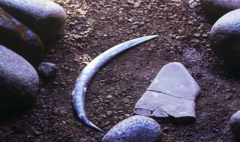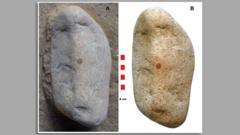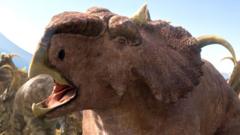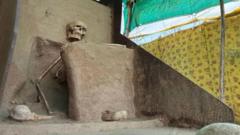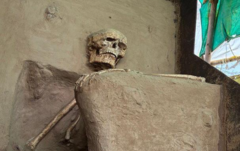Archaeologists have unearthed the long-lost tomb of Pharaoh Thutmose II in Luxor, Egypt, representing a significant archaeological find since King Tutankhamun. This historic tomb, discovered through a collaboration of Egyptian and British teams, provides new insights into ancient royal burial traditions and the reign of Thutmose II, who ruled around 1480 B.C.
Archaeological Breakthrough: Tomb of Pharaoh Thutmose II Discovered in Luxor

Archaeological Breakthrough: Tomb of Pharaoh Thutmose II Discovered in Luxor
The discovery of Thutmose II's tomb marks the first major excavation of a royal burial site in over a century, shedding light on Egypt's 18th Dynasty.
In a groundbreaking archaeological revelation, Egypt's Ministry of Antiquities announced this week the discovery of the tomb of Thutmose II, one of the significant pharaohs of ancient Egypt, located in a valley west of Luxor. This finding marks the first excavation of a royal burial site since the discovery of Tutankhamun's tomb in 1922, igniting excitement among historians and archaeologists alike.
Thutmose II, who is believed to have reigned around 1480 B.C., is known for his powerful connections, including being the husband of Hatshepsut, one of Egypt’s most prominent female rulers. The excavation of the tomb, a collaborative effort between Egyptian and British archaeologists that commenced in 2022, initially led researchers to suspect that it belonged to a royal consort due to its proximity to burial sites of royal wives.
Unique to this discovery is the tomb's location: lying in an unusual topographical area beneath two waterfalls and at the foot of a slope, likely due to the wetter climate of the 15th century B.C. Despite these peculiarities, the evidence inside the tomb confirmed that it was indeed constructed for a king. The researchers discovered fragments of alabaster jars inscribed with the name of Thutmose II as the "deceased king," and inscriptions that made direct references to Hatshepsut.
Of particular interest is the preservation of part of the tomb's ceiling, which features elaborate blue paint dotted with yellow stars. Such celestial designs are typically exclusive to tombs of kings, further underscoring the significance of this find. As archaeologists continue to excavate the site, this discovery promises to deepen our understanding of the practices and traditions surrounding royal burials in ancient Egypt, enriching the historical narrative of this fascinating civilization.








